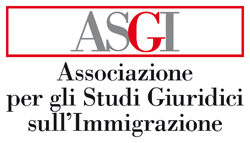Marco Borraccetti
Abstract: Il nuovo Patto europeo sull’immigrazione e l’asilo rappresenta il piano strategico della Commissione europea per lo sviluppo di tale politica europea nei prossimi anni; la sua pubblicazione è stata accompagnata da una serie di documenti di diversa natura, quali proposte di atti legislativi e raccomandazioni, rivelando così l’intenzione della Commissione di conseguire gli obiettivi indicati in tempi rapidi. L’azione della Commissione ambirebbe ad essere discontinua rispetto al passato; tuttavia, l’analisi svela che tale discontinuità è più annunciata che effettiva. Diversi sono gli elementi da prendere in considerazione, relativi a tre macro-aree: la prima, strettamente collegata al rapporto tra Stati membri e, in particolare, alla solidarietà tra di essi; la seconda, che riguarda la dimensione internazionale, in particolare alle relazioni con gli Stati terzi che occupano una posizione strategica nella dinamica migratoria, siano essi di origine o transito; infine, la terza che guarda alla protezione internazionale, con riferimento tanto al rispetto dei diritti degli interessati che ai criteri funzionali all’individuazione della competenza statale.
Abstract: The new European Pact on Immigration and Asylum represents the strategic plan of the European Commission for the development of this policy area over the next years. It was published with other documents of a different nature, such as proposals for legislative acts and recommendations, thus revealing the Commission’s intention to achieve the stated goals quickly. The Commission’s action aspires to represent a new start that is not related to past or previous initiatives. However, analysis reveals that this is more of an aspiration rather than a reality. There are several elements to be taken into consideration regarding three macro-areas: the first, closely related to the relationship between Member States and, in particular, to the solidarity between them; the second, concerns the international dimension, in particular relations with third countries that occupy a strategic position in the dynamics of migration, whether they are countries of origin or transit; the third looks at the international protection, with reference both to the protection of those who are concerned and to the criteria for the identification of the competent Member State.




